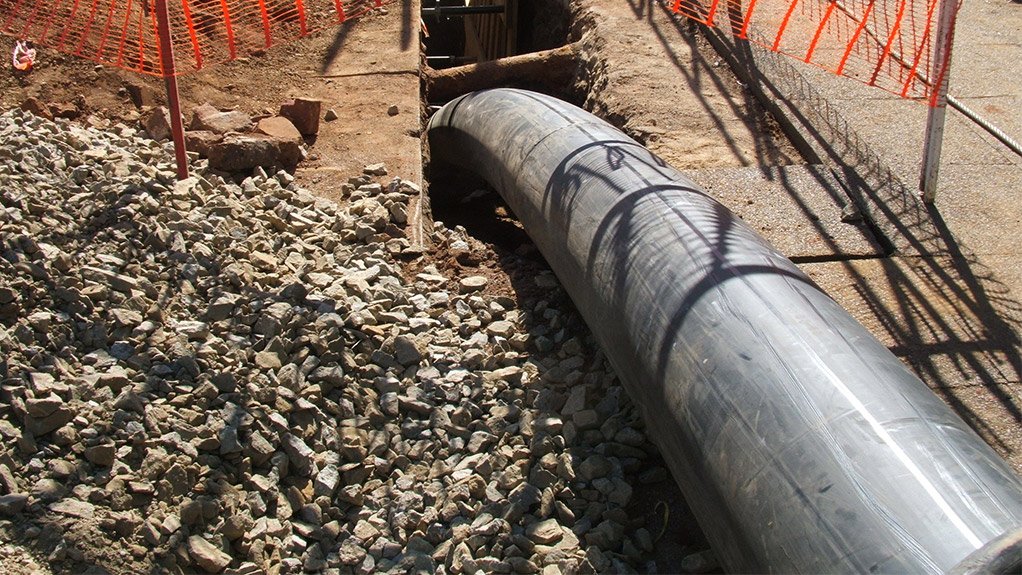The development of trenchless technologies to rehabilitate existing underground infrastructures with minimal disruption to surface traffic, business and other activities has had a profound impact on the construction and civil engineering industries. As the name suggests, trenchless technology requires little or no trenches to be dug in order for maintenance to be performed and can be defined as “a family of methods, materials, and equipment used to install new or replacement parts or renovation of existing underground infrastructure ”.
Because trenchless technology significantly reduces the need for invasive excavation, it has far less impact on the environment, both ecologically and socially. Residential areas remain intact, business areas do not have to deal with business losses and rural areas remain undisturbed. Noise and air pollution are also reduced to a minimum and the rehabilitation time is short.
“In the past, problems caused by aged and damaged sewer and rainwater pipes meant digging up and repairing or replacing any section of pipe that required attention. Carrying out repairs in this way is labor intensive and costly, not to mention the destruction of the surrounding landscape. Thanks to modern trenchless pipeline rehabilitation technologies such as HDPE pipe lining repair and pipe bursting, we now have an inexpensive and more sustainable way to repair pipelines, ”says Jan Venter, Chairman of the Southern African Plastic Pipe Manufacturers Association (SAPPMA).
As the popularity and use of trenchless technology grows, so does the importance of using high quality tubing that meets the specific requirements of the particular technology being used. It is for this reason that there is a solid working relationship between the South African Trenchless Technology Association (SASTT) and SAPPMA, with one focusing on installation techniques and the latter on the quality and type of materials used.
“The plastic pipe industry is a strategic industry where hardware must be reliable over long periods of time. According to industry standards, a high quality plastic pipe should have a lifespan of more than 100 years. For this reason, SAPPMA’s vision is to ensure the product quality of the materials used in the long term – be it in standard pipe installations or in applications without trenches, ”explains Venter.
When it comes to trenchless technology, there are many different methods to choose from. However, the two most common uses are:
Pipe liner: This involves pulling or turning a new liner into an existing pipe and then applying heat and / or pressure to force the liner to expand and fill the pipe.
Broken pipe: This involves breaking a pipe from the inside and pushing the fragments outwards while a new pipe is pulled in to replace the old pipe
Most of the services that currently offer trenchless technologies concern network and collection systems with a diameter of up to 450 mm. In these installations, pipes or pipe components are pulled, pushed or stretched. Deteriorated pipelines are rehabilitated using various types of sliding linings and directional drilling, while existing pipelines can be enlarged using burst pipes and their derivatives.
Thanks to the many advantages it offers in terms of cost efficiency, minimized environmental impact and safer processes, the use of HDPE pipes in trenchless technology is quickly becoming the preferred method for pipe rehabilitation in civil engineering. These pipes not only offer a service life of 100 years, but also provide solutions for key industry challenges such as corrosion and high leakage rates.
“HDPE pipes are ideal for pulling through long, underground holes, as they are flexible, robust and resistant to almost all aggressive elements. These plastic pipes offer a new generation of leak-proof, maintenance-free and energy-efficient piping systems that are chemically and abrasion-resistant and are therefore ideally suited for lining and lining pipelines, slurry applications, water networking, sewage and rainwater systems in the mining industry and in the Dolomites, “explains Venter.
Another great feature of HDPE pipe is the fact that it is available in a variety of connection systems for almost any new and existing method of application and installation. These pipes can be welded to long continuous lengths before pulling in and are available in PE100 in diameters from 16 mm to 1000 mm and in pressure ranges from PN2.5 to PN25.
“To ensure that the plastic pipes used in trenchless technology applications are manufactured in accordance with international quality standards, SAPPMA has adopted the ISO (International Standards Organization) standards for determining the quality of thermoplastic pipes (especially HDPE and PVC pipes) as SANS / ISO -Standard published. When we audit our member companies, we ensure that their pipes meet these rigorous quality standards before they are allowed to carry the SAPPMA approval mark in addition to those of a product certification body such as South African Technical Auditing Services (SATAS). or the SABS ”.
“We believe SAPPMA will play an important role in supporting the country’s trenchless industry by ensuring that contractors are supplied with piping that meets high quality standards for trenchless installations,” concludes Venter.


Comments are closed.